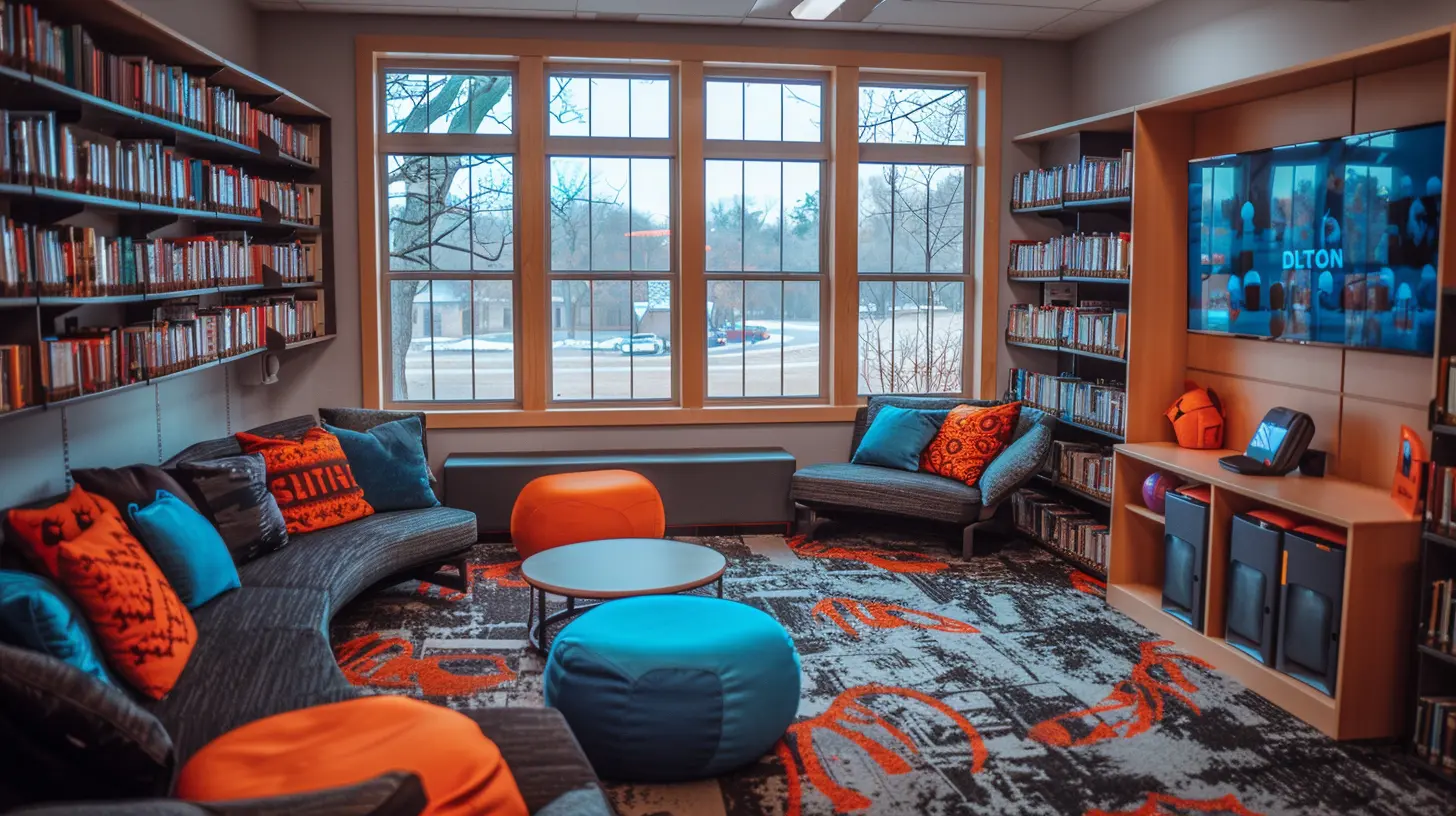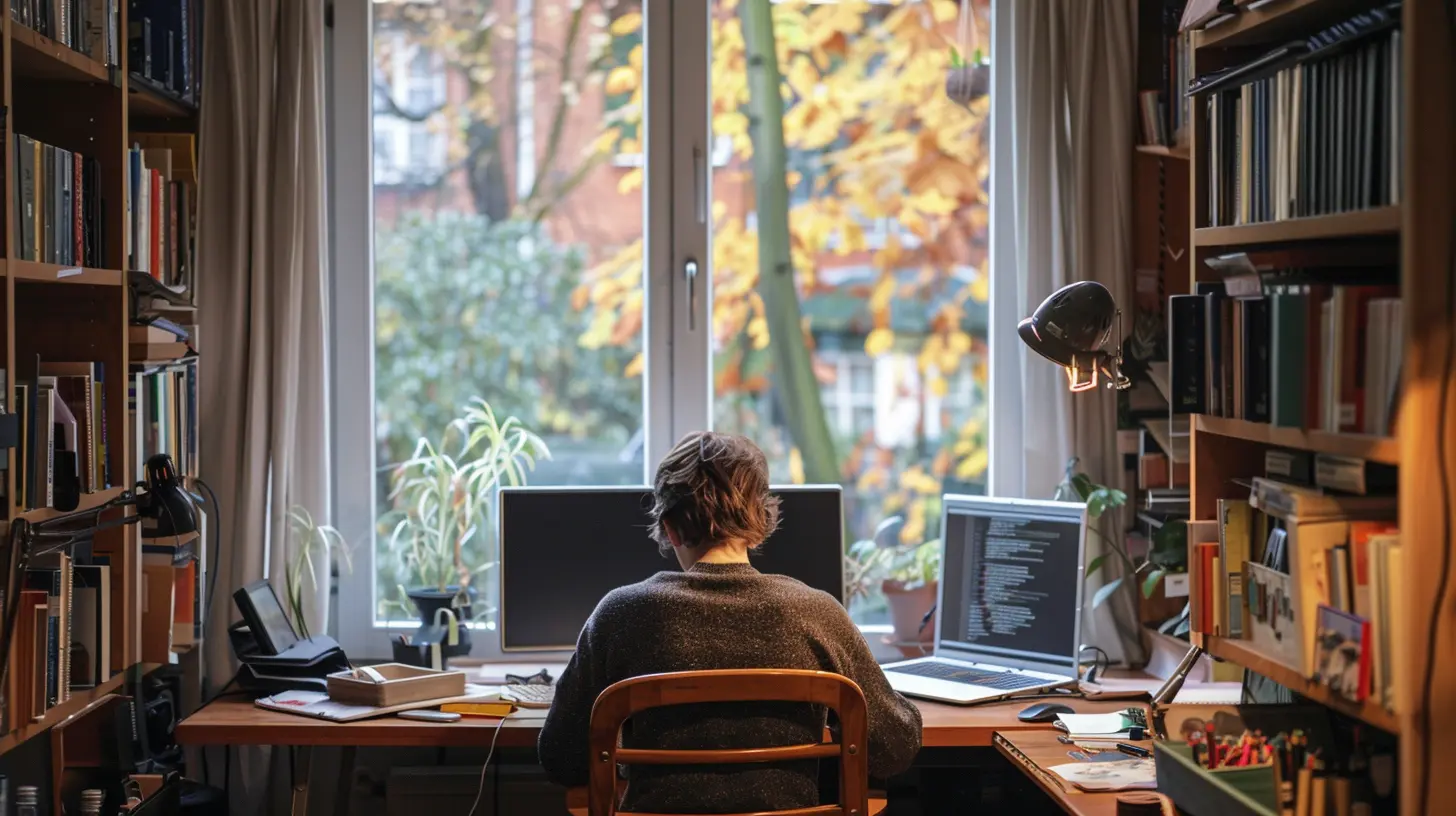Building a Productive Study Space for Online Learning
12 August 2025
Online learning has become the new norm, but let’s be real—staying focused at home can be a struggle. Distractions are everywhere, and motivation sometimes feels like it’s hiding under your bed. That’s where a well-designed study space comes in. Your environment plays a huge role in your ability to concentrate and stay productive.
So, how do you create a study space that sets you up for success? Let’s dive in and build the ultimate learning zone that keeps you motivated, organized, and focused! 
1. Choose the Right Location
Location matters—a lot. If you pick the wrong spot, you're setting yourself up for distractions before you even start. Here’s what to consider when selecting your study space:Quiet and Distraction-Free
Your study space should be away from noisy areas like the living room or kitchen. If you have roommates or family members around, try to find a quiet corner where interruptions are minimal.Good Lighting
Natural light is your best friend. It helps reduce eye strain and improves your mood. If possible, set up near a window. If that’s not an option, invest in a good desk lamp with warm lighting to keep your space bright and inviting.Comfort vs. Productivity
Yes, your bed is comfy, but it’s a trap! Working from bed makes it easy to drift into nap mode. Instead, choose a sturdy desk and a comfortable chair that supports good posture. Remember, your study space should keep you awake, not lull you to sleep.
2. Declutter and Organize Your Space
A cluttered desk leads to a cluttered mind. Keeping your study space neat and organized can do wonders for your focus and productivity.Keep Only the Essentials
Your desk should have only what you need—your laptop, textbooks, notebooks, and maybe a water bottle. Anything else? Store it away.Use Storage Solutions
Drawer organizers, shelves, and desk organizers can help keep things in order. This way, you’re not wasting time searching for a missing pen or that one notebook buried under a pile of papers.Go Digital Where Possible
Consider using digital note-taking apps like Evernote or OneNote to reduce paper clutter. Not only does this keep your workspace clean, but it also makes your notes easier to organize and find.
3. Optimize for Comfort and Focus
Creating a productive study space isn’t just about aesthetics—it’s also about making sure you can work for long periods without discomfort.Invest in an Ergonomic Chair
You’ll be sitting for hours, so don’t skimp on a good chair. Look for one that supports your back and encourages good posture.Set Your Screen at Eye Level
Looking down at your laptop screen for hours can strain your neck. Use a laptop stand or stack some books under your laptop to raise it to eye level.Reduce Digital Eye Strain
Staring at a screen all day can be exhausting. Follow the 20-20-20 rule—every 20 minutes, look at something 20 feet away for 20 seconds to reduce strain on your eyes.
4. Personalize Your Space for Motivation
Your study space should inspire you! A boring, lifeless desk isn’t going to make you excited to learn.Add a Vision Board or Motivational Quotes
Pin up your goals, favorite quotes, or even pictures that inspire you. These little reminders can keep you going when motivation starts to fade.Bring in Some Greenery
Plants are more than just decor—they help reduce stress and improve focus. A small desk plant like a succulent or a peace lily can make your study space feel more inviting.Use Background Music Wisely
Soft instrumental music or ambient sounds can enhance focus, but loud, distracting songs might do the opposite. Experiment and find what works best for you.5. Set Clear Boundaries
When your study space is at home, it’s easy for work and relaxation to blur together. Setting boundaries ensures you stay productive.Let Others Know Your Study Hours
If you live with family or roommates, let them know when you’re studying so they can minimize interruptions.Avoid Working in Relaxation Spaces
Studying in the same spot where you relax can make it hard to shut off. Keep your study space separate from areas where you watch TV or sleep.Stick to a Schedule
A dedicated study routine helps train your brain to focus during study hours and disconnect when you’re done.6. Minimize Digital Distractions
The internet is a double-edged sword. It has all the information you need, but it’s also filled with distractions like social media and YouTube.Use Website Blockers
Apps like Cold Turkey and Freedom can block distracting websites during study sessions, keeping you on track.Turn Off Notifications
Put your phone on silent or use “Do Not Disturb” mode to avoid constant distractions from social media or messaging apps.Try the Pomodoro Technique
Study in focused 25-minute blocks, then take a 5-minute break. This technique helps keep your mind fresh and prevents burnout.7. Keep Your Essentials Within Reach
Getting up every few minutes to grab something breaks your focus. Keep everything you’ll need within arm’s reach.Water and Snacks
Staying hydrated and having a quick snack nearby can prevent unnecessary trips to the kitchen.Study Supplies
Pens, highlighters, sticky notes—whatever you use frequently should be right on your desk.A Comfortable Blanket or Sweater
If you’re someone who gets cold easily, having a blanket or sweater nearby can help you stay comfortable without having to leave your desk.8. Stay Accountable and Motivated
Your study space is set up, but now you need to stay on track. Here’s how to keep yourself accountable:Make a Study Plan
Write down your daily or weekly goals. Having a clear plan helps you stay focused and measure your progress.Use a Timer
Time yourself while studying to stay on task and avoid procrastination.Reward Yourself
Set small rewards for reaching study milestones. Finished a tough chapter? Treat yourself to your favorite snack or a short break.Final Thoughts
Your study space has a huge impact on your focus, motivation, and overall learning experience. By choosing the right location, keeping it organized, making it comfortable, and setting boundaries, you can create an environment that helps you stay productive and engaged.Remember, it’s not about having a Pinterest-perfect setup—it’s about creating a space that works for YOU. So, take a look at your current study setup and start making those small changes today. Your future, less-distracted self will thank you!
all images in this post were generated using AI tools
Category:
Online LearningAuthor:

Monica O`Neal
Discussion
rate this article
1 comments
Idris Rogers
Transform your environment to transform your mind! Ditch distractions, embrace organization, and create a study space that fuels your ambition. Your success hinges on your surroundings—make them work for you, not against you.
August 16, 2025 at 2:28 AM

Monica O`Neal
Absolutely! A well-organized study space can significantly enhance focus and productivity. Creating an environment that minimizes distractions is key to fueling ambition and achieving success in online learning.


